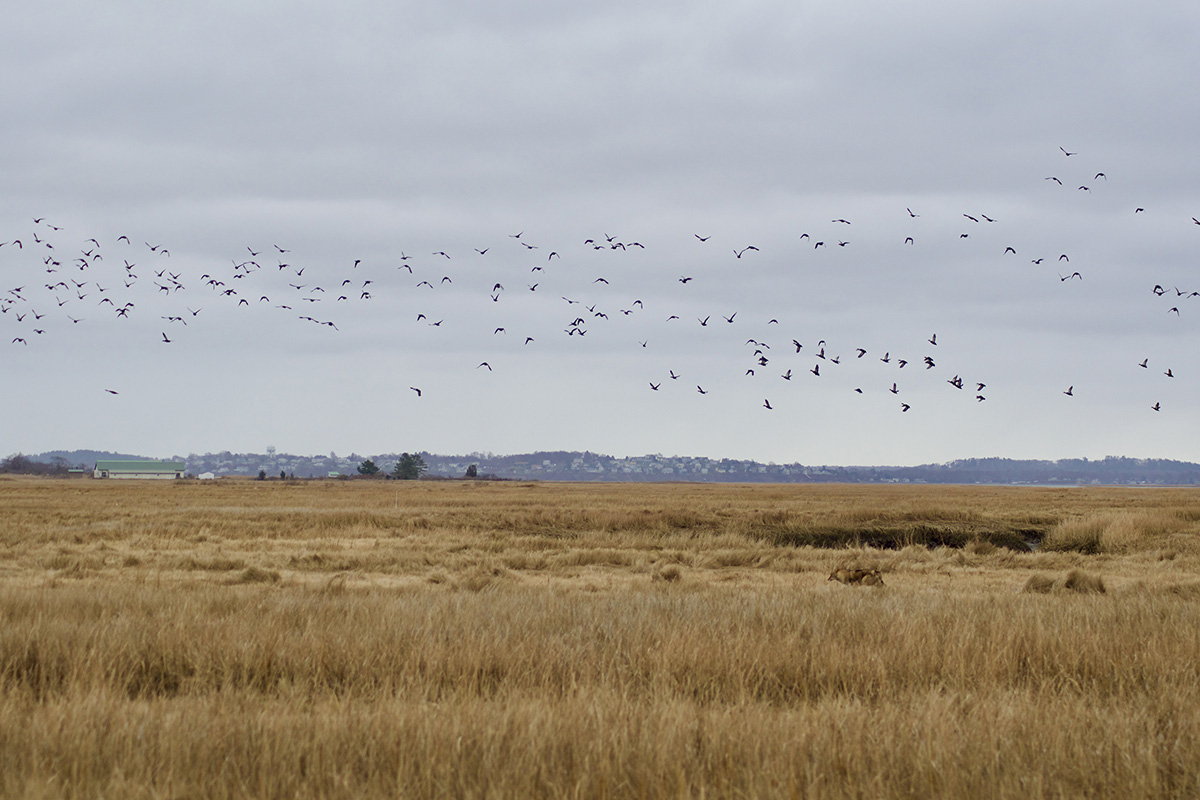Trail Camera Footage Will Maximize Wintering Black Duck Habitat
A new study that monitors black duck wetland use in the Atlantic Flyway helps pave the way for future restoration projects
A new study that monitors black duck wetland use in the Atlantic Flyway helps pave the way for future restoration projects

A coyote spooks a group of black ducks from the marsh.
Ducks Unlimited (DU) has partnered with the University of Delaware and the Black Duck Joint Venture (BDJV) on a study evaluating the response of wintering black ducks to habitat restoration and enhancement of freshwater wetlands. The project also includes the Natural Resources Conservation Service’s Working Lands for Wildlife Black Duck Program, which offers assistance to landowners who voluntarily enroll their properties in conservation easements.
The study will utilize footage from dozens of strategically placed trail cameras to monitor the use of Chesapeake Bay and Delmarva Peninsula marshes by black ducks.
“The goal is to improve our ability to target wetland acquisition and restoration in areas that maximize both habitat quantity and quality,” said John Coluccy, DU’s director of conservation science and planning. “Black ducks have unique wetland habitat requirements, so we’re going to assess wetland occupancy in relation to a variety of landscape factors, including distance to roads, urban areas and other wetlands, as well as surrounding landscape composition.”
BDJV’s $223,000 grant, along with $28,000 and $35,000 contributions from the University of Delaware and DU, respectively, will enable researchers to deploy 100 Bluetooth-enabled trail cameras over a two-year period, allowing wetlands in Delaware, Maryland, Virginia and New Jersey to be monitored with minimal human disturbance. The study, which is expected to take three to four years to complete, will incorporate ground surveys as well.
“We want to understand how black ducks use restored or enhanced freshwater wetlands based on factors like the size of the wetland, type of wetland, distance from salt marsh, proximity to habitat disturbance, and connectivity to or its isolation from other habitats,” said Christopher Williams, professor of wildlife ecology at the University of Delaware.

This image of green-winged teal, black ducks, and other species is from a trail camera set up on an Atlantic Flyway wetland.
Black ducks were once an abundant species across eastern North America. However, populations have steadily declined since the 1950s, and although they have stabilized in some regions, black ducks have yet to recover to historic levels. Several explanations for the decline have been proposed, including overharvest, competition and hybridization with mallards, reductions in the quantity and quality of breeding and wintering habitat, and disease. However, attempts to identify the primary factor remain inconclusive.
Over the past decade, the BDJV has prioritized research on the wintering ecology of Atlantic Flyway black ducks. The conservation of the species during the non-breeding period is of increasing concern, primarily because the salt marshes that black ducks depend on for survival are being lost and degraded by coastal erosion, storm surge and human development.
Understanding black duck habitat use during the wintering period is important from a management perspective because although the amount of habitat available can be quantified, some of those habitats may not be used by black ducks, leading to an overestimate of carrying capacity.
“There will be a lot of time dedicated to waterfowl identification once we have all the trail cam footage,” Coluccy said. “Of course, we’re looking for black ducks, but other species of waterfowl will be cataloged as well. So, there will be multiple benefits and plenty of new data that come from this study that can be used to guide the future of wetland restoration.”
Ducks Unlimited uses cookies to enhance your browsing experience, optimize site functionality, analyze traffic, and deliver personalized advertising through third parties. By continuing to use this site, you agree to our use of cookies. View Privacy Policy